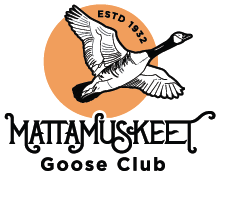Lake Mattamuskeet, the largest natural lake in North Carolina, is renowned for its rich biodiversity, particularly its thriving waterfowl population. This beautiful lake, part of the Mattamuskeet National Wildlife Refuge, is a haven for bird watchers and hunters alike. The Mattamuskeet Goose Club celebrates this region’s natural heritage. Let’s explore some of the common waterfowl species that call Lake Mattamuskeet home.
Tundra Swans
One of the most iconic species found at Lake Mattamuskeet is the Tundra Swan. These large, elegant birds migrate from their breeding grounds in the Arctic to spend the winter in the milder climates of the southeastern United States. Tundra Swans are easily recognizable by their all-white plumage and long, graceful necks. During the winter months, thousands of these swans can be seen feeding and resting in the shallow waters of the lake, creating a breathtaking spectacle.
Northern Pintails
Northern Pintails are another common sight at Lake Mattamuskeet. These slender, long-necked ducks are known for their striking appearance, with males displaying a distinctive chocolate-brown head, white breast, and long, pointed tail feathers. Pintails are highly migratory, traveling great distances between their breeding and wintering grounds. Lake Mattamuskeet provides an ideal habitat for these birds, offering plenty of food and shelter.
American Black Ducks
American Black Ducks are a staple of the Lake Mattamuskeet waterfowl community. These large, dark-colored ducks are often found in marshes, estuaries, and coastal habitats. Their dark plumage makes them easily distinguishable from other duck species. The American Black Duck population has faced challenges due to habitat loss and competition with the more adaptable Mallard, but Lake Mattamuskeet continues to support a healthy number of these birds.
Discover more about American Black Ducks
Mallards
The Mallard is perhaps the most familiar and widespread duck species in North America, and Lake Mattamuskeet is no exception. Mallards are known for their vibrant green heads, white neck rings, and chestnut-brown chests. They are highly adaptable and can be found in a variety of wetland habitats. Mallards are a common sight at Lake Mattamuskeet, where they take advantage of the abundant food resources and favorable conditions.
Green-winged Teal
The Green-winged Teal is the smallest dabbling duck in North America, but it is easily one of the most striking. Males have a distinctive green patch on their wings and a bold green stripe running from their eyes to the back of their heads. These agile and fast-flying ducks are a delight to watch as they dart across the water in search of food. Lake Mattamuskeet provides an ideal wintering ground for Green-winged Teal, thanks to its rich wetland ecosystem.
Gadwalls
Gadwalls are less colorful than some other duck species, but they are no less interesting. These medium-sized ducks have a subtle elegance, with males sporting a mix of gray, brown, and black feathers and a distinctive black rear end. Gadwalls are often seen dabbling in shallow waters or grazing on aquatic vegetation. Lake Mattamuskeet’s diverse habitats support a healthy population of these understated yet charming ducks.
Embracing the Heritage
The Mattamuskeet Goose Club is deeply intertwined with the natural beauty and rich biodiversity of Lake Mattamuskeet. We are humbled to represent such a magnificent area. Check out the Mattamuskeet Goose Club to see how we are representing Lake Mattamuskeet and Eastern North Carolina!
In conclusion, Lake Mattamuskeet is a treasure trove of waterfowl diversity, offering spectacular opportunities for bird watching and hunting. The Mattamuskeet Goose Club is proud to celebrate this unique ecosystem. Whether you’re a seasoned hunter or a passionate bird watcher, Lake Mattamuskeet has something special to offer.












